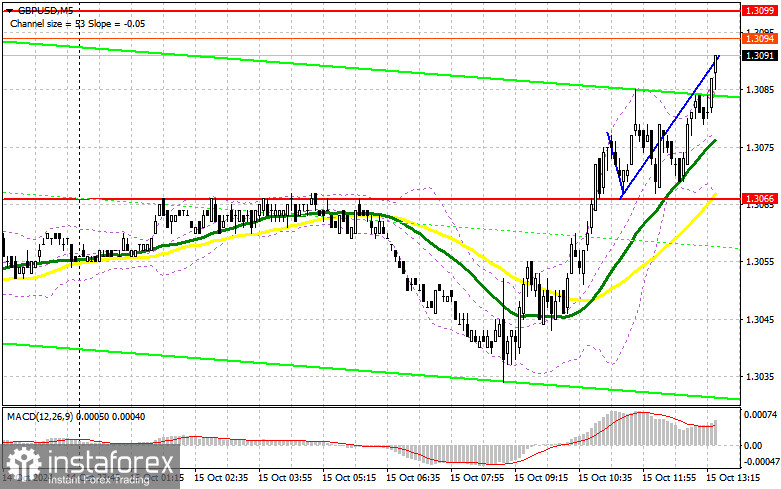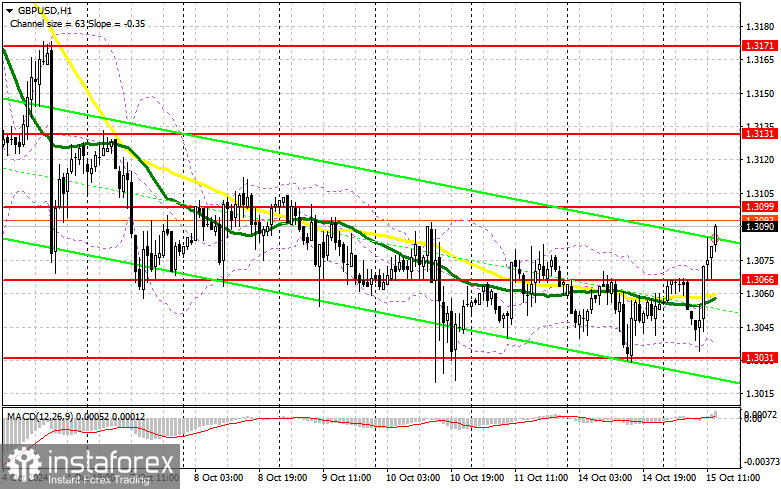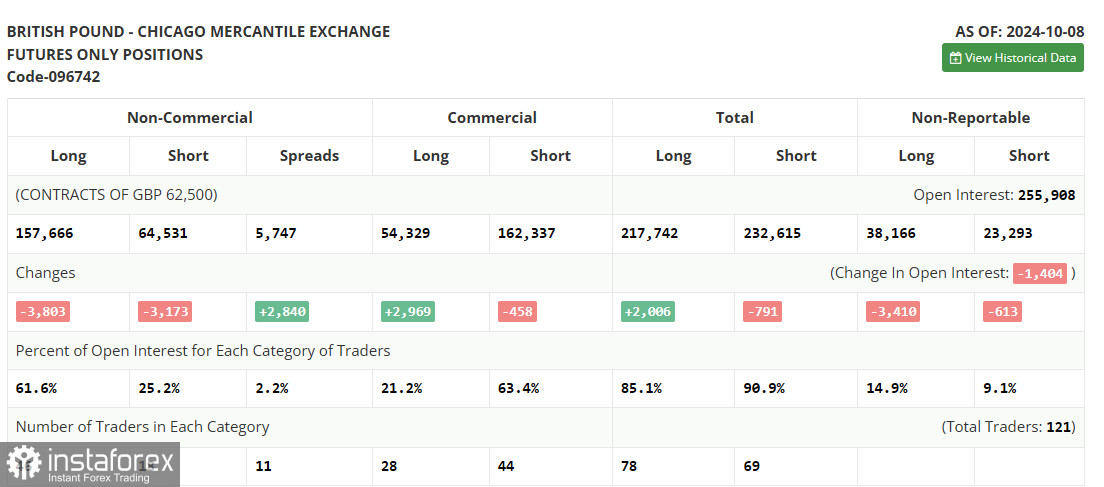In my morning forecast, I focused on the 1.3066 level and planned to make trading decisions based on it. Let's look at the 5-minute chart and see what happened. The breakout and subsequent retest of this range provided a good entry point for long positions, which, at the time of writing, has already resulted in a rise of over 30 points. The technical outlook was slightly revised for the second half of the day.
To open long positions on GBP/USD:
Speeches from several Federal Reserve representatives and the Empire Manufacturing Index for September are the only significant events during the U.S. session, giving pound buyers a chance to continue the upward movement. If GBP/USD declines and bears react to the statements, a false breakout around 1.3066, which served as resistance in the morning, would be a good entry point for long positions, with the chance of a recovery to the 1.3099 resistance. A breakout and retest of this range from above will strengthen the prospects for an upward trend, leading to the removal of sellers' stop orders and creating a good buying opportunity with the potential to reach 1.3131, which would undermine sellers' plans for further declines. The furthest target will be the 1.3171 level, where I plan to take profits. If GBP/USD declines and there is no activity from the bulls at 1.3066 in the second half of the day, the bearish market will return. This would also result in a decline and a retest of the next support at 1.3031. A false breakout there would be the only condition for opening long positions. I plan to buy GBP/USD on a rebound from the 1.2975 low, targeting for a 30-35 point correction within the day.
To open short positions on GBP/USD:
Sellers are in no rush to make a move, which leaves room for the pound's upward correction. Bears need cautious statements from Fed representatives regarding further rate cuts; otherwise, they risk losing control of the market. It's also important to stay below the 1.3099 resistance, which serves as the upper boundary of the sideways channel that the pair may stay within for the foreseeable future. A false breakout at this level will be an ideal scenario for opening new short positions. The target would be a drop to the 1.3066 support, which is the middle of the sideways channel. A breakout and retest of this range from the bottom up will strike a blow to buyers, leading to the removal of stop orders and opening the path to 1.3031. The furthest target will be the 1.2975 level, where I will take profits. Testing this level will reinforce the bearish market. If GBP/USD rises and there is no activity around 1.3099 in the second half of the day, buyers will try to reclaim the market. Bears will have no choice but to retreat to the 1.3131 resistance, which could become the upper boundary of the sideways channel. I will sell there only after a false breakout. If there is no downward movement from this level, I will look for short positions on a rebound from 1.3171, but only expecting a 30-35 point downward correction within the day.

The Commitments of Traders (COT) report for October 8 showed a reduction in both long and short positions, with nearly the same decrease in both. Recent U.K. data has not helped the pound to grow, but it has at least kept the pair within an important sideways channel, which could signal the end of the bearish market and the formation of a new bullish one. However, for this to happen, U.S. politicians would need to start talking about aggressively cutting rates again, which seems unlikely in the current conditions. The latest COT report showed that long non-commercial positions decreased by 3,803 to 157,666, while short non-commercial positions decreased by 3,173 to 64,531. As a result, the gap between long and short positions jumped by 2,840.
Indicator signals:
Moving Averages:
Trading is happening around the 30- and 50-day moving averages, indicating a sideways market.
Note: The period and prices of moving averages are considered by the author on the hourly H1 chart and differ from the general definition of classic daily moving averages on the daily D1 chart.
Bollinger Bands:
In case of a decline, the lower boundary of the indicator near 1.3045 will act as support.
Indicator descriptions:
- Moving average: Defines the current trend by smoothing volatility and noise. Period 50, marked in yellow on the chart.
- Moving average: Defines the current trend by smoothing volatility and noise. Period 30, marked in green on the chart.
- MACD indicator (Moving Average Convergence/Divergence): Fast EMA period 12, slow EMA period 26, SMA period 9.
- Bollinger Bands: Period 20.
- Non-commercial traders: Speculators, including individual traders, hedge funds, and large institutions, using the futures market for speculative purposes and meeting certain requirements.
- Long non-commercial positions: Represents the total long open position of non-commercial traders.
- Short non-commercial positions: Represents the total short open position of non-commercial traders.
- Total non-commercial net position: The difference between short and long positions of non-commercial traders.
 English
English 
 Русский
Русский Bahasa Indonesia
Bahasa Indonesia Bahasa Malay
Bahasa Malay ไทย
ไทย Español
Español Deutsch
Deutsch Български
Български Français
Français Tiếng Việt
Tiếng Việt 中文
中文 বাংলা
বাংলা हिन्दी
हिन्दी Čeština
Čeština Українська
Українська Română
Română

